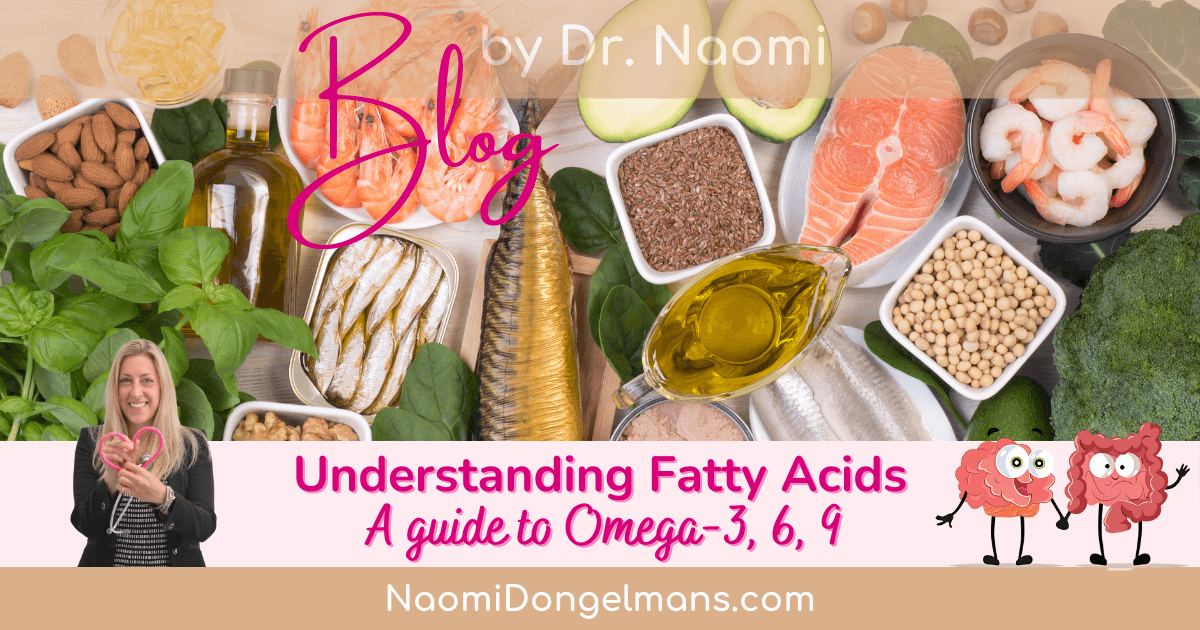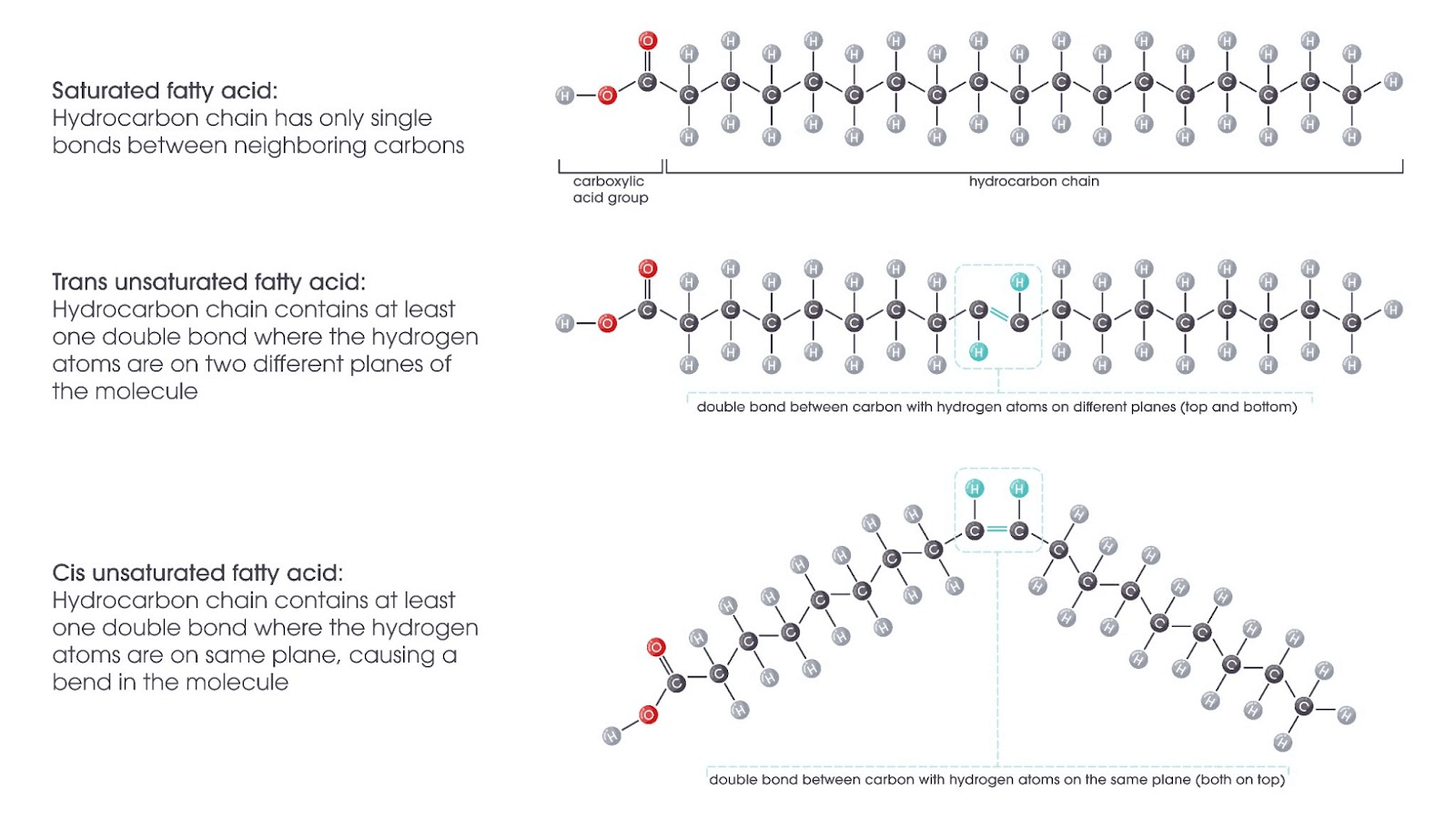How the right balance of fats can support your brain, hormones & overall health

Omega fatty acids are a cornerstone of nutritional science. They offer many health benefits and play crucial roles in bodily functions. Understanding the nuances of omega-3, omega-6, and omega-9 fatty acids, how they affect our health, and the best ways to balance their intake is vital for maintaining optimal wellness.
Omega-3 & omega-6: essential polyunsaturated fats
Both omega-3 and omega-6 are classified as essential fatty acids. This designation means that they are critical for health but cannot be synthesised by the human body, necessitating their acquisition through diet. These fatty acids are fundamental components of cell membranes, affecting cell structure and function. Moreover, they are intimately involved in the body's inflammatory processes, with omega-3s generally supporting anti-inflammatory actions and omega-6s promoting inflammation when consumed in excess.
Sources & benefits of omega-3 fatty acids
Omega-3 fatty acids are primarily found in fish oils, such as those from salmon, mackerel, and sardines, as well as in plant-based sources like flaxseeds, chia seeds, and walnuts. They are celebrated for their anti-inflammatory properties, which contribute to brain and heart health and reduce inflammation across the body. The main types of omega-3s include ALA (alpha-linolenic acid), prevalent in plant oils, and EPA (eicosapentaenoic acid) and DHA (docosahexaenoic acid), found in marine oils.
Omega-6 fatty acids: a double-edged sword
Contrarily, omega-6 fatty acids are everywhere in the modern diet, present in seeds, nuts, and the oils derived from them. While they are essential for health, an imbalance skewed towards excessive omega-6 consumption can contribute to inflammation, a precursor to many chronic diseases. The primary omega-6 fatty acid is LA (linoleic acid), which the body can convert into arachidonic acid (AA), a compound that plays a role in the body's inflammatory responses.
The importance of balancing omega-3 & omega-6 intake
The historical human diet exhibited a balanced ratio of approximately 1:1 between omega-6 and omega-3 fatty acids. However, the shift towards processed foods and the reliance on vegetable oils have distorted this balance, with modern Western diets often presenting ratios of 15:1 or higher in favour of omega-6. This imbalance is linked to increased inflammation and a higher incidence of chronic diseases. Adjusting dietary habits to favour a more balanced intake of these omegas can significantly reduce inflammation and enhance overall health.
Research also shows that the dramatic increase in the omega-6/omega-3 ratio in modern diets coincides with a rise in obesity. A high omega-6/omega-3 ratio increases the risk of obesity, while a higher intake of omega-3 fatty acids reduces this risk. Therefore, it is crucial to balance this ratio for better health and weight management.
The role of omega-9 fatty acids
Although not classified as essential (since the body can produce them), omega-9 fatty acids benefit heart health. Monounsaturated fats are found in olive oil, avocados, and certain nuts. Including omega-9s in the diet supports healthy cholesterol levels and can offer an efficient energy source for the body. While their balance is not as critical as omega-3 and omega-6, omega-9s contribute to a well-rounded and healthy fat intake.
Strategies for achieving omega balance
- Enhance omega-3 intake: To improve your diet's anti-inflammatory potential, prioritise foods rich in omega-3s, such as fatty fish, flaxseeds, and walnuts.
- Moderate omega-6 sources: Aim to reduce consumption of omega-6-rich vegetable oils and processed foods, which can help lower the risk of chronic inflammation.
- Incorporate omega-9 foods: Utilize olive oil in cooking and enjoy avocados and nuts for their heart-healthy fats.
Consider supplements: If dietary changes are insufficient, high-quality omega-3 supplements can help achieve a better fatty acid balance.
Choosing the best cooking oil
When selecting the best oils for cooking, it's essential to consider their health benefits and performance under heat. Stability at high temperatures is crucial to prevent the oil from breaking down into harmful compounds, ensuring healthier and safer cooking. Additionally, understanding the role of saturated fats in cooking is important. Saturated fats are more stable when heated, making them preferable for high-temperature cooking. You can recognise saturated fats by their solid state at room temperature, contributing to their cooking stability.

Here's my top 5 list of oils and fats for cooking, emphasising the importance of choosing natural, minimally processed options and being mindful of their processing methods:
1. Olive oil: My top choice for its rich flavour and health benefits, olive oil is perfect for lower-temperature cooking and dressings. Extra virgin olive oil, in particular, is less processed and retains more of its natural nutrients, making it a healthy addition to your kitchen. However, it's best used at moderate heat to preserve its qualities.
2. Coconut oil: A close second, coconut oil is known for its high smoke point and stability, making it suitable for frying and sautéing. Its unique flavour and health benefits make it a popular choice for those looking to add a tropical twist to their dishes.
3. Butter and Ghee: These are excellent for baking and frying, offering rich flavours and high smoke points, especially ghee. They add depth to dishes and can be used in various cooking methods. Opting for grass-fed varieties can also enhance the nutritional profile of your meals.
4. Lard: Often overlooked, lard is a traditional cooking fat similar to coconut oil that offers a high smoke point and stability. It's ideal for frying and sautéing, providing a flavour that complements many dishes without overpowering them.
5. Canola oil: This is not my favourite due to its high level of processing, but if you're looking for a neutral oil for tasks like making your own mayonnaise, canola is the best of the less ideal options. It offers a balanced omega ratio and is versatile for various cooking methods.
In summary
In summary, the choice of cooking oil or fat should not be dictated solely by its omega fatty acid content but also by its processing, smoke point, and stability under heat. By selecting the right oil for the right purpose, we can enhance the nutritional quality of our meals and support our overall health and well-being. By choosing natural, minimally processed fats and oils, we can enhance our meals' nutritional quality and support overall health and well-being.
| Fat/Oil | Omega-6 : 3 Ratio | Smoke Point |
| Canola Oil | About 2:1 | 204°C / 400°F |
| Flaxseed Oil (Linseed) | About 1:4 | 107°C / 225°F |
| Hemp Oil | About 3:1 | 165°C / 330°F |
| Soybean Oil | About 7:1 | 234°C / 453°F |
| Sunflower Oil | About 40:1 | 227°C / 440°F |
| Corn Oil | About 46:1 | 232°C / 450°F |
| Safflower Oil (High Linoleic) | About 75:1 | 265°C / 510°F |
| Walnut Oil | About 5:1 | 204°C / 400°F |
| Olive Oil (Extra Virgin) | Very low in omega-6 and omega-3, mainly omega-9 | 190-215°C/375-420°F |
| Avocado Oil | Low in omega-6 and omega-3, mainly omega-9 | 250-270°C/482-520°F |
| Coconut Oil | Very low in omega-3, high in saturated fat | 177-232°C / 350-450°F |
| Butter | Low in omega-6 and omega-3, high in saturated fat | 150-250°C / 302-482°F |
| Ghee | Very low in omega-6 and omega-3, high in saturated fat | 250°C / 482°F |
| Lard | Low in omega-6 and omega-3, high in saturated fat | 190°C / 374°F |
| Sesame Oil | About 41:1 | 177-232°C / 350-450°F |
Ready to invest in your health?
A one-on-one consultation is the fastest way to get a clear, actionable strategy tailored to your unique health puzzle. Let's get to the root cause and create a plan to help you feel your best.
Sources
- Simopoulos AP. The importance of the ratio of omega-6/omega-3 essential fatty acids. Biomed Pharmacother. 2002 Oct;56(8):365-79. doi: 10.1016/s0753-3322(02)00253-6. PMID: 12442909.
- Welty FK. Omega-3 fatty acids and cognitive function. Curr Opin Lipidol. 2023 Feb 1;34(1):12-21. doi: 10.1097/MOL.0000000000000862. Epub 2022 Nov 25. PMID: 36637075
- Costantini L, Molinari R, Farinon B, Merendino N. Impact of Omega-3 Fatty Acids on the Gut Microbiota. Int J Mol Sci. 2017 Dec 7;18(12):2645. doi: 10.3390/ijms18122645. PMID: 29215589; PMCID: PMC5751248.
- Watanabe Y, Tatsuno I. Prevention of Cardiovascular Events with Omega-3 Polyunsaturated Fatty Acids and the Mechanism Involved. J Atheroscler Thromb. 2020 Mar 1;27(3):183-198. doi: 10.5551/jat.50658. Epub 2019 Oct 3. PMID: 31582621; PMCID: PMC7113138.
- Simopoulos AP. An Increase in the Omega-6/Omega-3 Fatty Acid Ratio Increases the Risk for Obesity. Nutrients. 2016 Mar 2;8(3):128. doi: 10.3390/nu8030128. PMID: 26950145; PMCID: PMC4808858.
Love what you read here? Subscribe for updates! Add me to the list!





























Nu begrijp ik wat ik ga veranderen in de bakolie en garneer olieën over salade.
Dank je wel, Naomi!
Blijf gezond en geniet van de smakelijke en voedzame aanpassingen in je gerechten!
Groetjes, Naomi